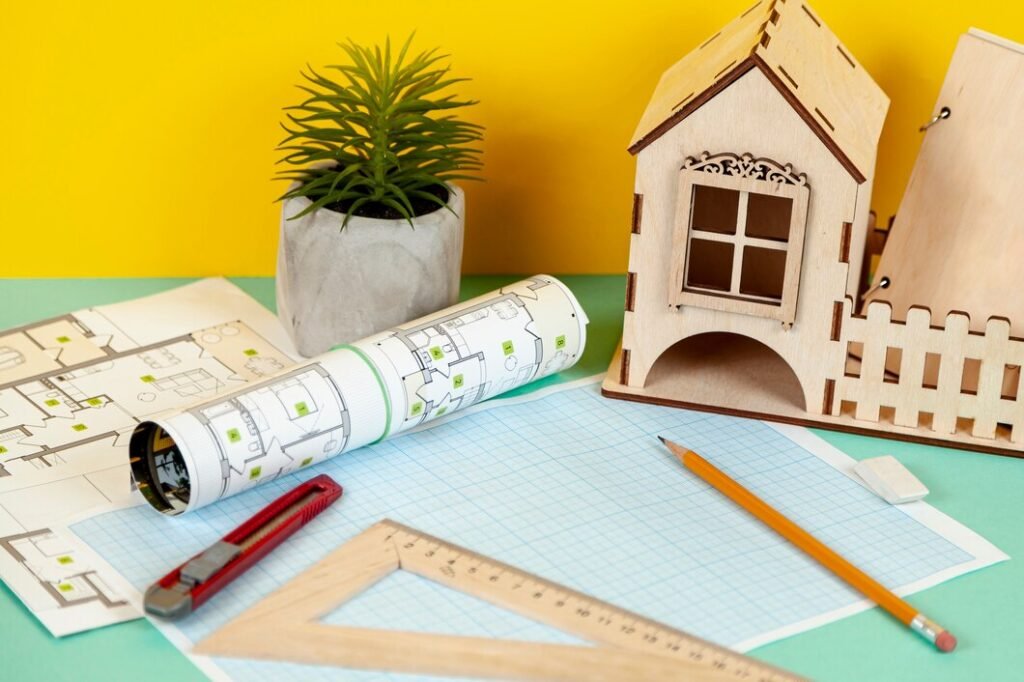Renovating a building can be a complex and demanding process. From planning and budgeting to execution, every item matters. One key factor that importantly influences the success of a service learner is study drafting. In this blog, we’ll hunt how leveraging study drafting could lead to more efficacious and efficacious building renovations. BIM Services in California broke down the ferment into doable parts, making it easier for you to learn and apply.
What is Architectural Drafting?
Architectural drafting is the ferment of creating detailed drawings and plans for a building or service project. These drawings serve as a pattern for building and service work. They acknowledge everything from floor plans and elevations to detailed sections and building notes. In essence, study drafting translates ideas and concepts into optic representations that guide the service process.
Why is Architectural Drafting Important?
Clarity and Precision: Detailed drawings allow a clear and correct delegate of what the finished service looks like. This clarity helps avoid misunderstandings and mistakes during construction.
Effective Communication: Drafts serve as a normal nomenclature between architects, contractors, and clients. They check that everyone involved in the learning has a clear understanding of the pattern and objectives.
Cost Management: Accurate drafting helps in estimating costs more effectively. It allows for detailed cereal lists and quantities, which could help in budgeting and avoiding unexpected expenses.
Regulatory Compliance: Many service projects need permits and must meet building codes. Detailed drafts check that the service complies with local regulations and standards.
Steps to Leverage Architectural Drafting in Building Renovations
Initial Assessment and Planning
Before starting any drafting work, bar the modern-day delineation of the building. This includes taking measurements as well as identifying morphologic elements, and noting any existing issues. Planning involves setting goals for the renovation, such as improving functionality as well as aesthetics,’ or vigor efficiency.
Creating Floor Plans
Floor plans are the basis of any study draft. They show the layout of rooms, walls, doors, and windows from a top-down view. For renovations, updating the existing floor plan to beam new changes is crucial. Ensure that the floor plan includes:
- Room Dimensions: Accurate measurements of each room.
- Walls and Partitions: Locations and sizes of doors and windows.
Developing Elevations
Elevations are drawings that show the outside view of the building from each side. For renovations, these drawings help visualize how the changes impacted the building’s appearance. They include:
- Facade Design: Updates to the building’s exterior, including materials and finishes.
- Height and Proportions: Accurate measurements of building soaring and proportions.
Detailing Sections
Section drawings finished the building to show interior, details. These were peculiarly authorized for understanding how clear-cut levels and components fit together. Include:
- Structural Elements: Details of beams, columns, and supports.
- Interior Layout: Information on floors, ceilings, as well as partitions.
Incorporating Building Systems
For a downright renovation, view integrating building systems with Construction Estimating Services California such as electrical, plumbing, and HVAC heating, ventilation, and air conditioning. Drafting these systems ensures they are correctly planned and implemented.
Review and Revise
Once the first drafts are consummate, study them for truth and completeness. It’s based on retooling the drafts based on feedback from clients as well as contractors, and other stakeholders. This step helps catch effectiveness issues before building begins.
Collaboration with Contractors
Share the drafts with contractors and builders to get their input on feasibility and cost. They could allow quantitative insights into hard-nosed aspects and offer modifications that could have improved the service process.
Using 3D Modeling
Modern study drafting often includes 3D modeling. This engineering allows you to learn the service in three dimensions, making it easier to learn how clear-cut elements work together. 3D models could also help in making pattern decisions and adjustments before the building starts.
Ensuring Compliance and Permits
Make sure that the study drafts meet all local building codes and regulations. Submit the drafts to the application regime to hold the demand permits before starting the service work.
Documenting Changes
During the service process as well as papers, any changes or modifications to the captain drafts. This certification helps maintain a correct mark of the learn and can be utile for rising renovations or maintenance.
Benefits of Using Architectural Drafting in Renovations
- Enhanced Accuracy: Detailed drafts declare the likeliness of errors and miscommunication, leading to a great service process.
- Better Visualization: Drafts and 3D models allow a clear cinema of the result, helping stakeholders make informed decisions.
- Streamlined Workflow: Clear and detailed drafts facilitated efficacious planning and execution as well as saving time and reducing costs.
- Improved Compliance: Drafts check that the service adheres to building codes and regulations, avoiding effective legal issues.
- Effective Budgeting: Accurate drafts with California Electrical Estimating Services help in creating detailed cost estimates, leading to the meliorate fiscal direction of the project.
Conclusion
Leveraging study drafting is base for achieving efficacious and high building renovations. By creating detailed floor plans as well as elevations, and sections, and incorporating building systems, you could check that your service learning ran smoothly and meets all your goals. The clarity and clarity provided by study drafts lead to better planning, cost management, and compliance with regulations.
Whether you’re renovating an act or commercialized space, as well as investing time and exploitation into study drafting, it pays off in the form of a well-executed and acceptable renovation.
Also Read: Businesscustom t shirts online




Pingback: Afternoon Tea Bus Tour: A Delightful London Adventure - rankingdream.com
Pingback: The Growing Trend of Disposable Pillows in Bulk: A Comprehensive Overview - rankingdream.com
Pingback: Why MPC Digital Marketing Company to Enhance Your Business - rankingdream.com